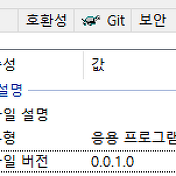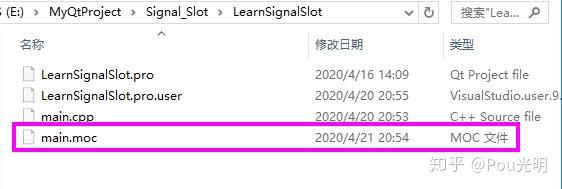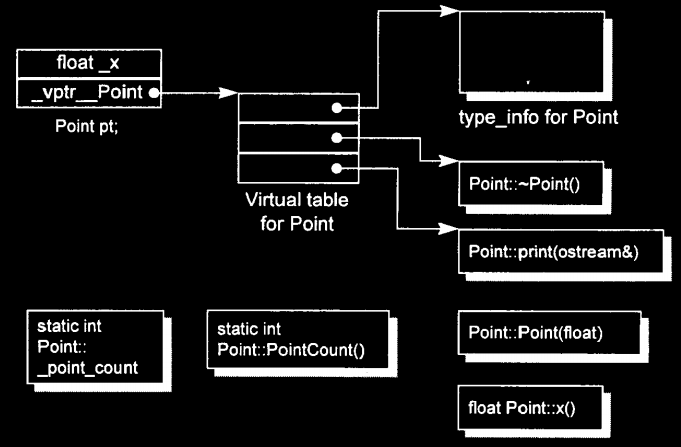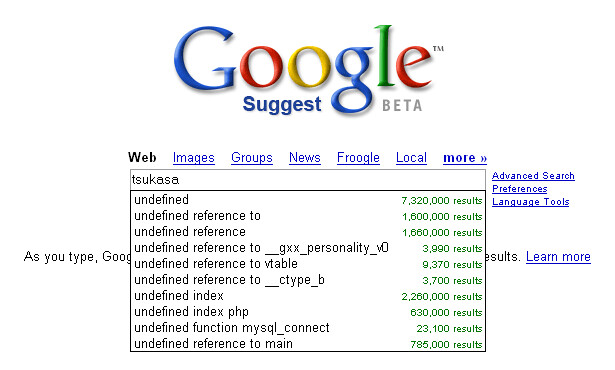Undefined Reference To Vtable
Introduction
When working with object-oriented programming languages like C++ or other languages that support virtual functions, you may come across an error message that says “undefined reference to vtable.” This error can be frustrating, especially if you’re not familiar with its causes and potential solutions. In this article, we will delve into the details of the undefined reference to vtable error and provide a comprehensive guide on how to resolve it.
What is an undefined reference to vtable?
Before we dive into the causes and solutions, let’s first understand what exactly an undefined reference to vtable means. In C++, a vtable (virtual function table) is a mechanism used to implement dynamic polymorphism through virtual functions. It contains function pointers to the actual implementations of these virtual functions.
When the error “undefined reference to vtable” occurs, it typically indicates that the linker is unable to find the appropriate vtable definition for a class, meaning that the vtable has not been defined or is not accessible. This error can occur during the linkage phase when attempting to create an executable from your source code.
Causes of undefined reference to vtable
Several factors can lead to the “undefined reference to vtable” error. Identifying the underlying cause is crucial in resolving the issue effectively. Here are some common causes:
1. Missing virtual functions: One possible cause is that a class defines a virtual function but fails to provide an implementation for it. This creates an unresolved reference in the vtable.
2. Improper inclusion of header files: If the header files containing the class declarations are not properly included, the compiler may not have enough information to generate the vtable definitions, leading to the error.
3. Circular dependencies: Circular dependencies occur when two or more classes depend on each other. If these dependencies are not resolved correctly, the linker cannot determine the correct order for vtable generation, resulting in an undefined reference.
4. Conflicting definitions of classes: When multiple definitions of the same class exist within your codebase, it can confuse the linker. This conflict may occur due to mismanaged source files or duplicate class declarations.
5. Syntax and usage errors: Any mistake in the syntax or usage of virtual functions can cause the vtable reference to become undefined. This can include misspelling a virtual function name or failing to override a pure virtual function.
How to resolve an undefined reference to vtable error?
Now that we understand the possible causes of this error, let’s explore some solutions to resolve it.
1. Check for missing virtual functions: Ensure that all classes with virtual functions provide a proper implementation for each one. Be cautious of any missing function definitions or unintentional omissions.
2. Verify proper inclusion of header files: Double-check that all necessary header files are correctly included in your source code. Ensure that you have included the header file containing the full class definition.
3. Resolve circular dependencies: If you suspect circular dependencies between classes, try breaking them by using forward declarations or redesigning your code structure. This will allow the linker to process the vtables in the correct order.
4. Check for conflicting definitions of classes: In case you have duplicate class definitions within your codebase, thoroughly review your project’s files and ensure that you eliminate any redundant or conflicting declarations.
5. Ensure correct syntax and usage of virtual functions: Take extra care to ensure that the virtual functions are declared and defined correctly. Pay attention to spelling, capitalization, and the use of the “virtual” and “override” keywords where necessary.
Common mistakes leading to the undefined reference to vtable error
While understanding the causes and resolutions is crucial, it’s also important to be aware of common mistakes that can lead to this error. By avoiding these blunders, you can save yourself plenty of headaches:
1. Omitting the implementation of a virtual function in the derived class: Forgetting to provide implementations for virtual functions in derived classes is a common mistake. Make sure you override virtual functions whenever necessary.
2. Misspelling the name of a virtual function in the derived class: A simple typo can break the vtable reference. Always double-check the spelling of virtual functions to ensure it matches the one in the base class.
3. Misusing the “override” keyword: When overriding a virtual function, it’s essential to use the “override” keyword explicitly. Failing to include it can result in unresolved vtable references.
4. Failing to include the base class header file: Make sure you include the header file of the base class where the virtual functions are declared. Without this inclusion, the derived class will not have access to the base class’s vtable.
5. Incorrectly using the “virtual” keyword: Pay attention to the correct usage of the “virtual” keyword. It should only be used in the base class’s function declaration, not in the derived class.
Additional tips for resolving the undefined reference to vtable error
Here are a few additional tips to help you effectively resolve the undefined reference to vtable error:
1. Double-check inheritance relationships: Ensure that all base classes are correctly inherited and that the virtual functions are correctly overridden in the derived classes.
2. Review template classes: If you are using template classes, pay special attention to the syntax and resolution of the virtual function calls.
3. Examine class visibility: Verify that the class definitions and vtable definitions are accessible where they are referenced. Improper access specifiers can lead to unresolved references.
4. Consult compiler and linker documentation: Compiler and linker errors can often be cryptic. Consult your compiler and linker documentation or relevant language references to gain a better understanding of error messages and potential solutions.
In conclusion, the “undefined reference to vtable” error can be a challenging issue to resolve, but with a solid understanding of its causes and effective troubleshooting techniques, you can overcome it successfully. By identifying missing virtual functions, verifying header file inclusion, resolving circular dependencies, checking for conflicting class definitions, and ensuring correct syntax and usage of virtual functions, you can eliminate this error and make your code error-free.
FAQs
Q: What does “undefined reference to vtable” mean?
A: This error message indicates that the linker is unable to find the appropriate vtable definition for a class, meaning that the vtable has not been defined or is not accessible.
Q: How can I resolve the “undefined reference to vtable” error?
A: Here are some steps to help resolve the error:
1. Check for missing virtual functions.
2. Verify proper inclusion of header files.
3. Resolve circular dependencies.
4. Check for conflicting definitions of classes.
5. Ensure correct syntax and usage of virtual functions.
Q: What are some common mistakes that can lead to the “undefined reference to vtable” error?
A: Some common mistakes include omitting the implementation of a virtual function in the derived class, misspelling the name of a virtual function, misusing the “override” keyword, failing to include the base class header file, and incorrectly using the “virtual” keyword.
Q: Are there any additional tips for resolving the “undefined reference to vtable” error?
A: Yes, here are a few additional tips:
1. Double-check inheritance relationships.
2. Review template classes.
3. Examine class visibility.
4. Consult compiler and linker documentation.
Q: How can I avoid the “undefined reference to vtable” error in the future?
A: To avoid this error, ensure that you provide proper implementations for virtual functions, correctly include header files, resolve circular dependencies, avoid conflicting class definitions, and use correct syntax and usage of virtual functions during development. Regular code reviews and testing can also help identify and address any potential issues early on.
C++ Virtual Functions Vtable Explanation
What Is Undefined Reference To Vtable For?
When working with object-oriented programming languages like C++, you may come across a compilation error known as an “undefined reference to vtable.” This error can be quite puzzling for beginners and even experienced developers. In this article, we will delve into the concept of vtables, understand why this error occurs, and explore ways to resolve it.
Understanding vtables:
In C++, a vtable, also known as a virtual table, is a mechanism used to implement polymorphism. Polymorphism allows us to treat objects of different classes as objects of a common base class, which facilitates code reuse and flexibility.
A vtable is essentially an array of function pointers that map to the virtual functions defined in a class. When a class declaration includes at least one virtual function, the compiler automatically creates a vtable for that class. Each object of a class with virtual functions contains a hidden pointer to the vtable, known as the “vpointer.” This enables dynamic dispatch, meaning the correct function is called at runtime based on the actual type of the object.
Why the “undefined reference to vtable” error occurs:
The “undefined reference to vtable” error typically occurs during the linking phase of compilation. It denotes that the virtual function table, or one of its functions, is missing or inaccessible. Here are some common reasons for this error:
1. Absent virtual function definition:
One possible cause is the absence of a definition for a virtual function declared in a base class. While it is not mandatory for pure virtual functions, derived classes must provide definitions for non-pure virtual functions to avoid the vtable error.
2. Incorrect scope for virtual function definition:
Another common mistake is providing the definition of a virtual function outside the appropriate class scope. Ensure that the definition of all virtual functions is within the correct class declaration.
3. Missing or incorrect function signature:
If the signature of a virtual function doesn’t match the declaration in the base class, it can lead to the “undefined reference to vtable” error. Verify that the virtual function’s parameters and return type match exactly with the declaration.
4. Virtual function defined with a different access specifier:
A mismatch between the access specifier of a virtual function’s declaration and definition can cause this error. Check if the access specifier (public/protected/private) matches correctly across the declaration and definition.
Resolving the “undefined reference to vtable” error:
Correcting this error often involves careful analysis of the code segments involved. Here are a few steps to resolve the issue:
1. Check for pure virtual functions:
Ensure that all pure virtual functions have a definition, either within the base class or in its derived classes. If a class has a pure virtual function, it becomes an abstract class and cannot be instantiated directly.
2. Verify function signatures:
Double-check that the parameters and return types of virtual functions exactly match their respective declarations. Minor mismatches can cause this error.
3. Examine the function access specifiers:
Make sure that the access specifiers of virtual functions match across the declaration and definition in their respective classes.
4. Inspect class hierarchy:
If the error persists, verify the inheritance hierarchy and inheritance rules. Ensure that derived classes accurately inherit and redefine virtual functions.
Frequently Asked Questions (FAQs):
Q1. Is the “undefined reference to vtable” error specific to C++?
Yes, this error is specific to C++ as it involves concepts like virtual function tables and dynamic dispatch, which are unique to object-oriented programming languages like C++.
Q2. Can this error occur during runtime?
No, this error occurs at compile-time during the linking phase. The compiler examines the functions’ references and resolves them to the appropriate memory addresses, including those of the vtable.
Q3. Does this error always pertain to virtual functions?
Generally, yes. This error often occurs due to issues related to virtual functions and their definitions within class declarations.
Q4. How can I debug the “undefined reference to vtable” error?
Start by carefully reviewing the error messages to identify the specific function or classes causing the issue. Ensure that all necessary functions have definitions and that their signatures match perfectly. Analyze the inheritance hierarchy and access specifiers, as these are frequent culprits for this error.
To conclude, the “undefined reference to vtable” error is common when working with virtual functions and vtables in C++. Understanding the concept of vtables, analyzing the potential causes of the error, and following the suggested resolutions can help you overcome this issue. Remember, careful attention to detail and thorough debugging will lead you to the solution, ensuring your code runs smoothly and efficiently.
How To Fix Undefined Reference In C?
Introduction:
When programming in C, encountering an “undefined reference” error can be frustrating. This error typically arises during the linking process when the linker cannot find a function or variable that is referenced in the code. In this article, we will delve deep into understanding the causes behind undefined reference errors and provide effective solutions to fix them.
Understanding Undefined Reference Errors:
Undefined reference errors occur when the linker fails to find the definition of a referenced symbol, such as a function or variable name, during the linking phase of the code compilation process. These errors can be caused by various issues, such as:
1. Missing Function Definition:
If a function is referenced in your code, but no definition is provided, the linker will generate an undefined reference error. To resolve this, make sure all the functions used are properly defined and included in your code.
2. Missing Variable Definition:
Similar to missing function definitions, failing to define a variable that is referenced in your code can lead to an undefined reference error. Ensure that all variables used are appropriately defined in the code.
3. Mistyped/Lack of Header Files:
Sometimes, undefined reference errors occur due to mistyped or missing header files which contain the definitions of functions or variables used in your code. Verify the correctness of your included header files and ensure they match the required definitions.
4. Missing/Wrong Library Linking:
If your code relies on external libraries, you must ensure that the required libraries and associated linker flags are correctly linked during the compilation process. Failure to link the necessary libraries can result in undefined reference errors.
Solutions to Fix Undefined Reference Errors:
1. Check Function and Variable Definitions:
Inspect your code for any missing function or variable definitions. Verify that all functions used have their respective definitions included in the code or linked externally.
2. Include Correct Header Files:
Ensure that all necessary header files are included correctly in your code. Double-check the spelling and accuracy of the file names. If you are using external libraries, make sure to include the relevant header files associated with those libraries.
3. Link Required Libraries:
When utilizing external libraries, confirm that the necessary libraries are linked appropriately during the compilation process. Consult the documentation of the libraries you are using to learn the correct linker flags or command-line options to include during compilation.
4. Use Header Guards:
In the case of multiple inclusions of the same header file, use header guards or the #ifndef directive to prevent redefinitions. This ensures that the definitions of functions and variables in your header files are not duplicated.
5. Verify Linker Options:
Make sure the required linker options, such as -lm for linking with the math library, are specified correctly. These options help the linker resolve any references to external functions or variables.
FAQs:
Q1. What should I do when I encounter multiple undefined reference errors?
When facing multiple undefined reference errors, start by fixing one error at a time. Tackling one error can often resolve subsequent errors, as fixing the first one might reveal missing definitions or required libraries.
Q2. Why am I still getting undefined reference errors after including the correct header files?
While including the correct header files is essential, ensure that you have also linked the required libraries. Function declarations in header files guide the compiler, while library linking helps the linker find the actual definitions.
Q3. How can I locate the source of an undefined reference error in a large codebase?
Use the error message provided by the linker to identify the function or variable causing the error. From there, systematically check your codebase for correct definitions, missing headers, or library linking issues.
Conclusion:
Undefined reference errors can be frustrating, but by thoroughly understanding their causes and implementing the suggested solutions, you can effectively fix them in your C code. Always ensure that all required functions and variables are defined, and the correct header files and libraries are included and linked. By following these guidelines, you’ll be well-equipped to overcome undefined reference errors and enhance the overall reliability and functionality of your C programs.
Keywords searched by users: undefined reference to vtable Error undefined reference to vtable for, Undefined reference to vtable for shape, Undefined reference to typeinfo for, Undefined reference to vtable for constructor, Undefined symbol vtable, Undefined reference to destructor, Undefined reference to in C, Undefined reference to class C++
Categories: Top 84 Undefined Reference To Vtable
See more here: nhanvietluanvan.com
Error Undefined Reference To Vtable For
Introduction:
When writing C++ code, encountering errors is a common occurrence. One such error that often puzzles beginners is the “undefined reference to vtable” error. This error message can be quite cryptic and often leaves developers scratching their heads. In this article, we will delve into the details of this error, understand its causes, and explore possible solutions.
Understanding the vtable:
To comprehend the nature of the “undefined reference to vtable” error, let’s first understand what a vtable is in C++. The vtable, short for virtual table, is a key mechanism used in C++ to implement polymorphism. It is an array of function pointers that allows for dynamic dispatch – the ability to call the most appropriate method based on the actual type of an object, even when using a pointer or reference to a base class.
The vtable is created by the compiler for each class that has at least one virtual function. It contains addresses of the virtual functions specific to that class. When a virtual function is called through a pointer or reference to a base class, the correct function from the vtable is invoked dynamically at runtime.
Understanding the error:
The “undefined reference to vtable” error typically occurs during the linking phase of the program compilation. It indicates that the compiler cannot find the implementation of a virtual function, leading to an unresolved reference in the vtable.
The most common cause of this error is a function prototype mismatch. When a derived class overrides a virtual function, its function signature (return type, parameters) must exactly match that of the base class’s virtual function. Any deviation can cause the compiler to generate an incorrect vtable entry, resulting in the “undefined reference to vtable” error.
Another potential cause is when the implementation of the virtual function is missing. The compiler expects each virtual function declaration to have a corresponding implementation in the source file. If an implementation is absent, the linker fails to find it, leading to the error.
Solutions to the error:
To resolve the “undefined reference to vtable” error, you can consider the following approaches:
1. Check for function signature mismatch:
Review the virtual function declarations and definitions in both the base and derived classes. Ensure that the function signatures match precisely, including the return type, parameter types, and constness.
2. Implement the missing virtual functions:
If the error is caused by an absent implementation of a virtual function, provide the necessary implementation with the correct function signature. This will link the vtable entry correctly.
3. Check for pure virtual functions:
If the base class has declared a virtual function as pure by using the “= 0” syntax, ensure that all derived classes provide concrete implementations for these functions. Failure to do so can lead to the “undefined reference to vtable” error.
4. Include all relevant source files:
Verify that all required source files, containing the definitions of virtual functions, are appropriately included during the linking process. Missing a source file can result in an unresolved reference error.
Frequently Asked Questions (FAQs):
Q1. Can the “undefined reference to vtable” error occur when using templates?
A1. Yes, the error can occur when using templates. The same principles apply – the function signature must match for the template specialization and derived classes.
Q2. Why does the error occur during linking and not during compilation?
A2. The error arises during linking because the vtable entries are resolved at this stage. The compiler can successfully compile the code, but the linking process fails to find the referenced virtual functions.
Q3. Are there any tools to help diagnose the error?
A3. Yes, various debugging tools, such as GDB for C++ or IDEs like Visual Studio, have features that can aid in pinpointing the cause of the “undefined reference to vtable” error. These tools enable you to trace the flow of execution, analyze function calls, and inspect memory contents.
Q4. Can this error occur when using multiple inheritance?
A4. Yes, multiple inheritance can introduce complexities in function resolution and vtable layout. Ensure that the function signatures are correctly inherited and implemented in the derived classes to avoid the error.
Conclusion:
The “undefined reference to vtable” error in C++ is often perplexing for developers, especially beginners. By understanding the nature of the vtable, the causes of the error, and the possible solutions, you can effectively troubleshoot and resolve this issue. Remember to carefully review function signatures, provide missing implementations, and validate the inclusion of all relevant source files. With these steps, you’ll be on your way to overcoming the “undefined reference to vtable” error and optimizing your C++ code.
Undefined Reference To Vtable For Shape
Introduction:
If you are an aspiring programmer who has recently delved into the world of object-oriented programming (OOP), you might have come across the perplexing error message, “Undefined reference to vtable for Shape”. This cryptic error can cause frustration and confusion among developers. In this comprehensive article, we will demystify this error, delve into its root causes and potential solutions, and address some frequently asked questions (FAQs) to provide a clear understanding of this issue.
Understanding the Error:
In C++, a vtable (virtual table) is a mechanism used for implementing dynamic dispatch and polymorphism. A vtable is essentially an array of pointers to virtual functions within a class. When a class contains at least one virtual function, the compiler generates a vtable for that class. This table allows the correct virtual function to be called at runtime, based on the actual object type.
The error message “Undefined reference to vtable for Shape” is commonly encountered when the compiler cannot find the implementation of a virtual function specified in a class derived from the Shape class. As a result, the vtable remains incomplete, leading to the error.
Root Causes:
1. Missing Virtual Function Implementation: One of the most common causes of this error is forgetting to define the implementation of a virtual function declared in a class derived from Shape. It is essential to provide a definition for each virtual function.
2. Incomplete Linkage: Another cause of the “Undefined reference to vtable for Shape” error is related to the linkage process. If the shape.cpp file, which contains the implementation of the virtual function, is not properly linked during the compilation process, the vtable will remain incomplete, resulting in this error.
Possible Solutions:
1. Define Virtual Functions: Ensure that every virtual function declared in a derived class has a corresponding implementation. If a pure virtual function is intended, mark it using “= 0” in the declaration. Remember that pure virtual functions require derived classes to provide their own implementation.
2. Check Linkage: Verify if the shape.cpp file (or any other relevant source file) is properly linked while compiling. Ensure that the file containing the implementation of the virtual function is linked correctly to avoid incomplete vtable references.
3. Rebuild/Recompile: If the error persists, try rebuilding or recompiling the entire project to refresh the linkage. This step can help resolve issues arising from the build process.
Frequently Asked Questions (FAQs):
Q1. Can I encounter this error with other virtual functions, or is it specific to the Shape class?
While the error message is commonly associated with the Shape class, it can occur with any class that contains virtual functions. The root cause remains the same—an incomplete vtable due to missing or improperly linked virtual function implementations.
Q2. I am sure I have implemented all virtual functions correctly. Why does this error still occur?
In rare cases, this error may persist even when all virtual functions are correctly implemented. One possible reason is that the derived class might not be properly linking with the Shape class, resulting in an incomplete vtable. Ensure that all necessary files are correctly connected during the build process.
Q3. How can I find the missing virtual function in a large codebase?
When dealing with a large codebase, locating the missing virtual function can be challenging. Start by narrowing down the search to the derived classes and carefully check each function declaration for corresponding implementations. Using integrated development environments (IDEs) often provides helpful features like “Find All References” that can assist in locating missing implementations.
Q4. Are there any automated tools or compiler flags to detect this error?
Some modern compilers provide additional warnings or flags to help detect issues related to incomplete vtables. For example, GCC provides the -Wnon-virtual-dtor flag, which identifies missing virtual destructors that could contribute to the error. Additionally, static analysis tools like Clang’s static analyzer or ReSharper for Visual Studio can aid in catching such errors during development.
Conclusion:
The “Undefined reference to vtable for Shape” error is a common stumbling block developers encounter when working with virtual functions and inheritance. By carefully understanding the root causes and applying the suggested solutions outlined in this article, developers can effectively rectify this error and avoid similar pitfalls in future projects. With persistence and a solid grasp of OOP principles, you can confidently navigate through this error and continue honing your programming skills.
Images related to the topic undefined reference to vtable

Found 6 images related to undefined reference to vtable theme

























![Solved]-undefined reference to `__imp_WSACleanup'-C++ Solved]-Undefined Reference To `__Imp_Wsacleanup'-C++](https://i.stack.imgur.com/7zStC.png)





![Solved]-Undefined reference to 'SDL_main'-C++ Solved]-Undefined Reference To 'Sdl_Main'-C++](https://i.stack.imgur.com/h3ANF.jpg)








Article link: undefined reference to vtable.
Learn more about the topic undefined reference to vtable.
- Undefined reference to vtable – c++
- Undefined Reference to Vtable: An Ultimate Solution Guide
- C++ linker gives me undefined reference to vtable error
- Undefined reference to vtable – c++ – Stack Overflow
- C and C++ BaseStation undefined reference errors – IBM
- C++ Errors: Undefined Reference, Unresolved External Symbol etc.
- LLVM Dev Mtg: Relative VTables in C++
- Undefined Reference to vtable : r/cpp_questions
- 42540 – c++ error message [vtable undefined] is unhelpful
- undefined reference to vtable and typein – C++ Forum
- Fix the ‘undefined reference to `vtable for CLASSNAME’ …
- [Solved]-undefined reference to vtable-C++
- Getting a compiler error “undefined reference to vtable”
- Undefined reference to `vtable for mlir
See more: https://nhanvietluanvan.com/luat-hoc